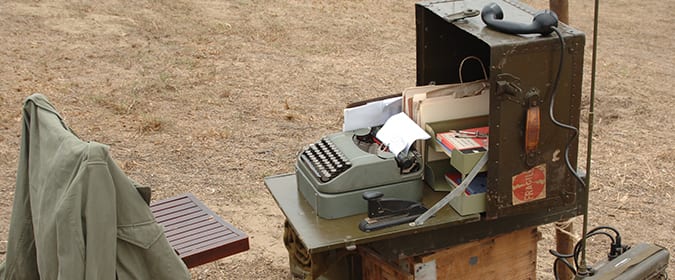
For most Americans, reporting by journalists embedded in war zones with our troops is the primary way we learn about our military men and women and the issues and challenges of serving in the armed forces. Only 0.4 percent of U.S. citizens (or 1.4 million people) are currently serving as active-duty service personnel, and only 6.9 percent of Americans (or 22 million men and women) are military veterans. The journalists who tag along with America’s soldiers, sailors, airmen and Marines – through wartime and peace – connect us with these important topics.
We’ve rounded up 10 great books about some of the best military, war and defense reporters in the business to help you learn more about America’s wars and war correspondents.
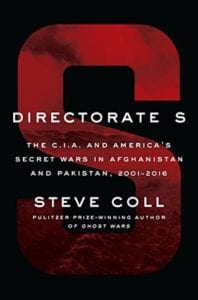 Directorate S: The C.I.A. and America’s Secret Wars in Afghanistan and Pakistan by Steve Coll
Directorate S: The C.I.A. and America’s Secret Wars in Afghanistan and Pakistan by Steve Coll
Steve Coll is the recipient of two Pulitzer Prizes and is the dean of the Columbia University Graduate School of Journalism, so he’s got the best journalism bona fides a writer could ask for. But he’s also an expert on terrorism and the war in Afghanistan, thanks to his nearly three decades covering South Asia. In Directorate S, Coll explores the failures of the war in Afghanistan after 9/11 and how the United States’ inability to understand the motivations of Pakistan’s intelligence operation, Directorate S, caused much of the U.S. effort to go sideways.
In Extremis: The Life and Death of the War Correspondent Marie Colvin by Lindsey Hilsum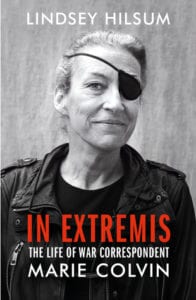
Marie Colvin’s life story is the subject of the new movie A Private War, currently in theaters, but her life and work are too grand to be fully captured in only two hours on the silver screen. Colvin died at war, killed in an artillery attack in Syria in 2012, at age 56. Her life took her around the world to cover wars and crises, starting in 1986, when she became the Middle East correspondent for The Sunday Times. Over nearly 30 years, Colvin covered wars across Europe, Africa and the Middle East, and has been heralded as a hero not only of her profession, but to women and children in East Timor, where she is credited with saving more than 1,500 people during a battle in 1999. Author Lindsey Hilsum’s tireless research, brings vivid color to Colvin’s extraordinary life story.
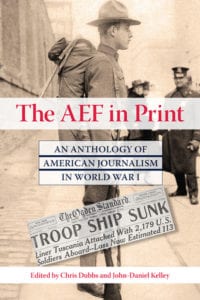 The AEF in Print: An Anthology of American Journalism in World War I edited by Chris Dubbs and John-Daniel Kelley
The AEF in Print: An Anthology of American Journalism in World War I edited by Chris Dubbs and John-Daniel Kelley
This collection of reporting from the First World War covers every moment of the U.S. public’s experience of the war “over there,” from the day U.S. involvement began, on April 6, 1917, to the Armistice of November 11, 1918. Perfect reading for those celebrating the ceasefire’s centennial, the articles in this anthology cover everything from the sinking of the SS Tuscania to first-hand accounts of battle and life at sea for members of the U.S. Navy.
Once There Was a War by John Steinbeck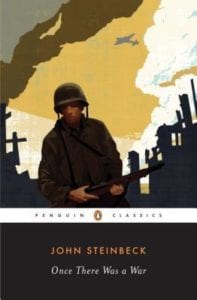
Though already a renowned writer by the time World War II began, Steinbeck nonetheless decided to head to war as a correspondent for the New York Herald Tribune in 1943. He traveled across North Africa and Italy with American troops, and even survived the Blitz in London while reporting about the lives of the men he was traveling with. He wrote stories about battles, but also about daily life, from seeing the USO tours with the men to chatting with them at chow time, creating a truly comprehensive view of life during the Second World War.
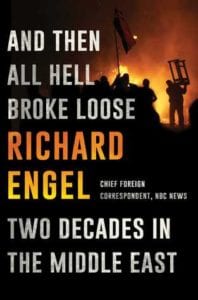 And Then All Hell Broke Loose: Two Decades In the Middle East by Richard Engel
And Then All Hell Broke Loose: Two Decades In the Middle East by Richard Engel
Richard Engel is the chief foreign correspondent for NBC News and has spent the majority of his career covering the Middle East and North Africa. In his 2016 memoir, Engel recaps his experiences of being at war, from being in the line of fire, to being in blast range of bombings, to being taken hostage in Syria while covering the civil war. His story reads like a thriller rather than a memoir, but his experiences never color his reporting. Engel’s memoir is the perfect combination of solid reporting and engaging first-person accounting of the wars in the Middle East.
Journalists Under Fire: The Psychological Hazards of Covering War by Anthony Feinstein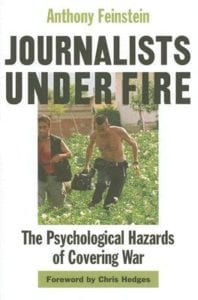
Though published in 2006, Anthony Feinstein’s book is an exceptional look at the hazards and harms journalists face when reporting in the field during wartime. Though not every war correspondent will experience physical or emotional trauma while reporting from a war zone, the information in Feinstein’s book should be required reading for anyone looking to head downrange. Feinstein combines scientific and psychological research with first-hand accounts from numerous journalists to provide readers with the most complete look at the war-reporting experience.
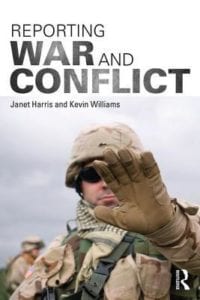 Reporting War and Conflict by Janet Harris and Kevin Williams
Reporting War and Conflict by Janet Harris and Kevin Williams
Janet Harris and Kevin Williams tackle the moral, practical and emotional considerations reporters must make when deciding to go to war. Through case studies, research and interviews, the authors explore why journalists cover wars, the cost-benefit analysis of embedding versus flying solo, the additional risks faced by women reporters in conflict zones, and how technology has changed the field for better or worse.
Reporting Under Fire: 16 Daring Women War Correspondents and Photojournalists by Kerrie Logan Hollihan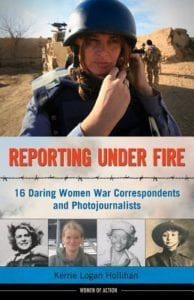
War reporting is often believed to be a man’s field, but dozens of smart, courageous women have gone to conflict zones to report the news, starting from the earliest wars. Kerrie Logan Hollihan covers 16 renowned women reporters who worked to bring news of the wars home, from World War I right through to the current hotbeds of Iraq and Afghanistan. Some of the names, like Martha Raddatz and Martha Gellhorn, will be familiar to any newshound, while others, like Henrietta Goodnough and Georgie Anne Geyer may be new to you. Anyone interested in the impact of war on women would benefit from this tome.
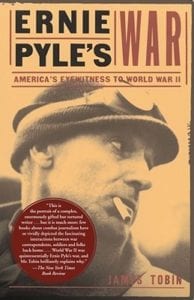 Ernie Pyle’s War: America’s Eyewitness to World War II by James Tobin
Ernie Pyle’s War: America’s Eyewitness to World War II by James Tobin
Ernie Pyle is one of the most famous war reporters of the 20th century. His reporting won him a Pulitzer Prize in 1944, just a year before his death; he was killed in Japan in 1945, while traveling with an Army regiment. But Pyle’s reporting didn’t die with him. He has long served as a hero and mentor to aspiring combat correspondents, his easy, everyman style of journalism captivating readers even decades after his war ended. Author James Tobin traces Pyle’s life from his earliest days as a newspaper reporter to his column about traveling through America and his experiences covering World War II, giving readers a chance to get to know the famous writer in a way his reporting didn’t allow.
The Taliban Shuffle: Strange Days in Afghanistan and Pakistan by Kim Barker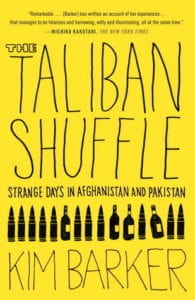
Kim Barker’s memoir was turned into the hilarious and true-to-life movie Whiskey Tango Foxtrot, produced by and starring actress and comedian Tina Fey. Barker covered Afghanistan and Pakistan starting in 2002, at a time when the public’s attention – and the military’s – was shifting to Iraq. But that didn’t deter her. With little field reporting experience and zero experience reporting overseas, Barker carved a niche for herself as a war reporter capable of finding the humor and humanity in what was already becoming known as America’s “forgotten war.”
